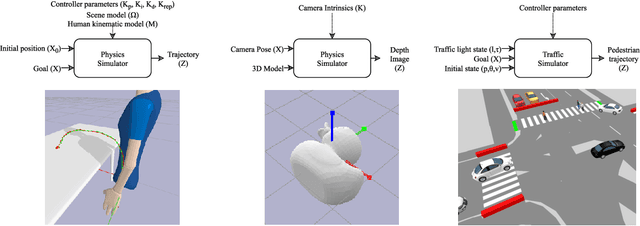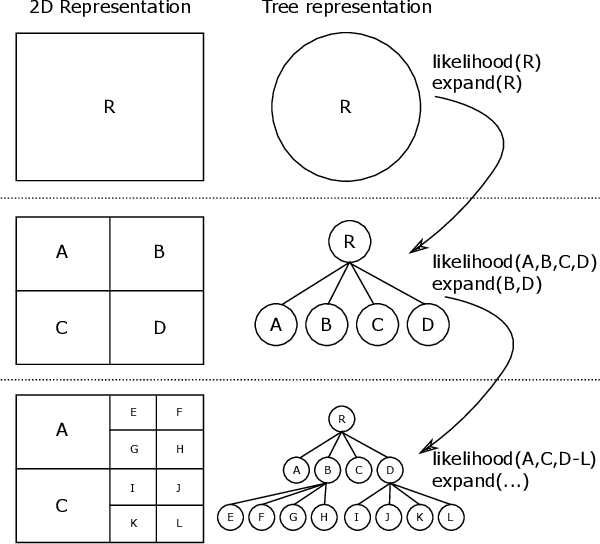David Gómez-Gutiérrez
A Hybrid Method for Online Trajectory Planning of Mobile Robots in Cluttered Environments
Aug 22, 2019



Abstract:This paper presents a method for online trajectory planning in known environments. The proposed algorithm is a fusion of sampling-based techniques and model-based optimization via quadratic programming. The former is used to efficiently generate an obstacle-free path while the latter takes into account the robot dynamical constraints to generate a time-dependent trajectory. The main contribution of this work lies on the formulation of a convex optimization problem over the generated obstacle-free path that is guaranteed to be feasible. Thus, in contrast with previously proposed methods, iterative formulations are not required. The proposed method has been compared with state-of-the-art approaches showing a significant improvement in success rate and computation time. To illustrate the effectiveness of this approach for online planning, the proposed method was applied to the fluid autonomous navigation of a quadcopter in multiple environments consisting of up to two hundred obstacles. The scenarios hereinafter presented are some of the most densely cluttered experiments for online planning and navigation reported to date. See video at https://youtu.be/DJ1IZRL5t1Q
Autonomous Navigation of MAVs in Unknown Cluttered Environments
Jun 20, 2019



Abstract:This paper presents an autonomous navigation framework for reaching a goal in unknown 3D cluttered environments. The framework consists of three main components. First, a computationally efficient method for mapping the environment from the disparity measurements obtained from a depth sensor. Second, a stochastic method to generate a path to a given goal, taking into account field of view constraints on the space that is assumed to be safe for navigation. Third, a fast method for the online generation of motion plans, taking into account the robot's dynamic constraints, model and environmental uncertainty and disturbances. To highlight the contribution with respect to the available literature, we provide a qualitative and quantitative comparison with state of the art methods for reaching a goal and for exploration in unknown environments, showing the superior performance of our approach. To illustrate the effectiveness of the proposed framework, we present experiments in multiple indoors and outdoors environments running the algorithm fully on board and in real-time, using a robotic platform based on the Intel Ready to Fly drone kit, which represents the implementation in the most frugal platform for navigation in unknown cluttered environments demonstrated to date. See video at https://youtu.be/Wq0e7vF6nZM
Real-time Approximate Bayesian Computation for Scene Understanding
May 22, 2019



Abstract:Consider scene understanding problems such as predicting where a person is probably reaching, or inferring the pose of 3D objects from depth images, or inferring the probable street crossings of pedestrians at a busy intersection. This paper shows how to solve these problems using Approximate Bayesian Computation. The underlying generative models are built from realistic simulation software, wrapped in a Bayesian error model for the gap between simulation outputs and real data. The simulators are drawn from off-the-shelf computer graphics, video game, and traffic simulation code. The paper introduces two techniques for speeding up inference that can be used separately or in combination. The first is to train neural surrogates of the simulators, using a simple form of domain randomization to make the surrogates more robust to the gap between the simulation and reality. The second is to adaptively discretize the latent variables using a Tree-pyramid approach adapted from computer graphics. This paper also shows performance and accuracy measurements on real-world problems, establishing that it is feasible to solve these problems in real-time.
 Add to Chrome
Add to Chrome Add to Firefox
Add to Firefox Add to Edge
Add to Edge